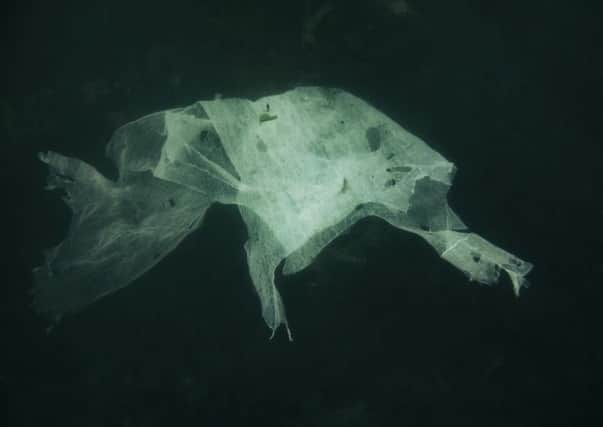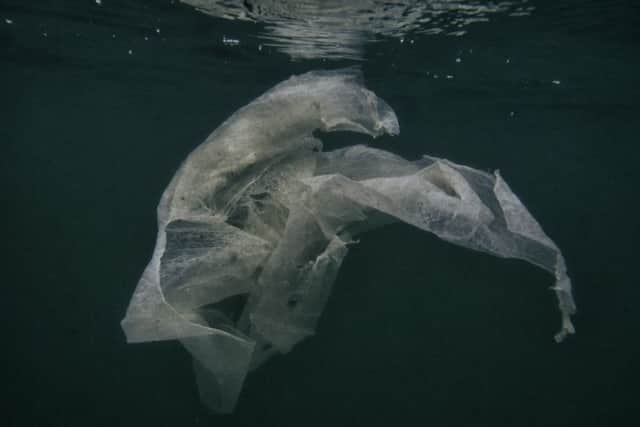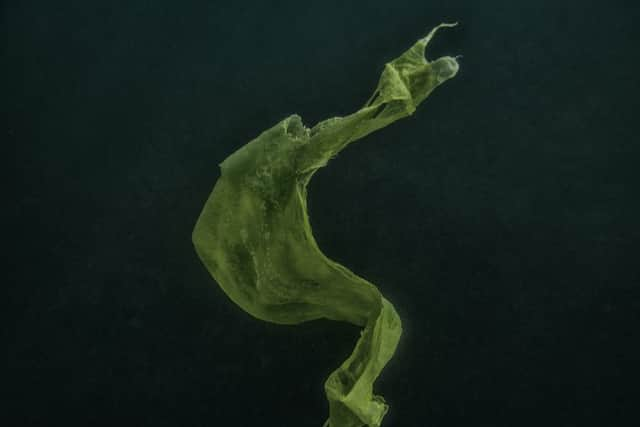Roger Cox: The hidden world captured by Scots freediver


This year’s programme boasts work by no fewer than 54 photographers spread across eight venues. International big hitters on the bill include the American commercial photographer Kareem Black, whose popular side project Feels Good Let’s Go documents the outer fringes of the Big Apple’s colourful nightlife; Alma Haser of Germany, who was shortlisted for the Taylor Wessing Portrait Prize in 2012 for her unsettling images created using unusual paper-folding techniques; and the English portrait and fashion specialist Jason Bell, who has taken iconic images of some of the most instantly recognisable faces in popular culture.
Scots David Boni and Dougie Wallace will also be big draws – the former an advertising photographer who has branched out into filmmaking, the latter acclaimed for his long-term social documentary projects, notably his photo essays on Bombay cab drivers, Road Wallah, and on Blackpool stag and hen nights, Stags, Hens and Bunnies, both of which took three years to shoot.
Advertisement
Hide AdAdvertisement
Hide AdAlso featured at Retina this year is the work of Edinburgh’s Janeanne Gilchrist. She may not have quite the international reputation of some of the others on the bill, but her magnificent, mysterious sub-aquatic images – at Leith Custom House from 11-30 July – are like nothing you’ll see anywhere else.


More often than not, underwater photography tends to be all about flora and fauna. Nothing wrong with that – everyone loves a picture of an exotic bottom-dwelling beastie or a colourful bit of coral. Gilchrist, however, is more interested in the man-made objects floating around beneath the waves. Freediving off East Lothian, and occasionally off Scotland’s north coast – no breathing apparatus, no snorkel – she hunts down and photographs decomposing plastic bags and tangles of rope or fishing line as they drift in the current. The subject matter may sound prosaic, but the results are dramatic, ethereal, otherworldly.
“As I’m diving,” she says, “the interesting things to me are... yes, there’s fish there, there’s lots of life out there, but then there are the objects that are found, and these are the lost ghosts – objects that we have made, that have been purposed by man, objects that have come into the sea that have no right to be there, but as they break down they do have a sort of beauty about them.”
It might sound like an odd comparison, but several of the pictures in Gilchrist’s Retina show have more than a little in common with the work of Alison Watt – not her earlier, figurative work, but the paintings she started making around the turn of the millennium, when she abandoned the human form and instead started focusing on the folds and creases of fabric. Like the paintings that Watt exhibited at the Scottish National Gallery of Modern Art in her 2000 exhibition Shift, and like Still, her giant painting for Old St Paul’s Church in Edinburgh, Gilchrist’s photographs exist somewhere in the no man’s land between figuration and abstraction – on the one hand, they are precise, minutely detailed studies of real-world materials; on the other they present the viewer with ambiguous shapes, infinitely suggestive. One tangle of rope and seaweed looks like a writhing knot of eels one minute, a skull the next; a plastic bag caught by a shaft of sunlight could be a jellyfish or a translucent dress or an x-ray of a human brain. Like Watt’s paintings, these are images that draw you in – the more you look, the more you see.
Advertisement
Hide AdAdvertisement
Hide AdTaking photographs while freediving isn’t easy. “I’m in the water trying to do it in one breath,” says Gilchrist. “A lot of these things are down in deeper water, so I have to get down to them, I have to try and frame the shot and then I have to come up again and get air. With the bags, the current’s playing with them the entire time – you’re trying to capture something that’s never going to be in the same spot again, so you only get one crack at it.”


And when you’re a long way out to sea – far enough out that passing fishermen stop and ask you what the hell you think you’re doing – learning how to control your fear is also a factor. “Sometimes when you’re down in the kelp, you get spooked,” says Gilchrist, “and sometimes you can get that feeling of what it would be like to be in a shipwreck and drowning. You’ve got to get your brain in the right place, because when you’re out in the open ocean and there’s no-one else around, no-one can hear you scream if something goes wrong.”